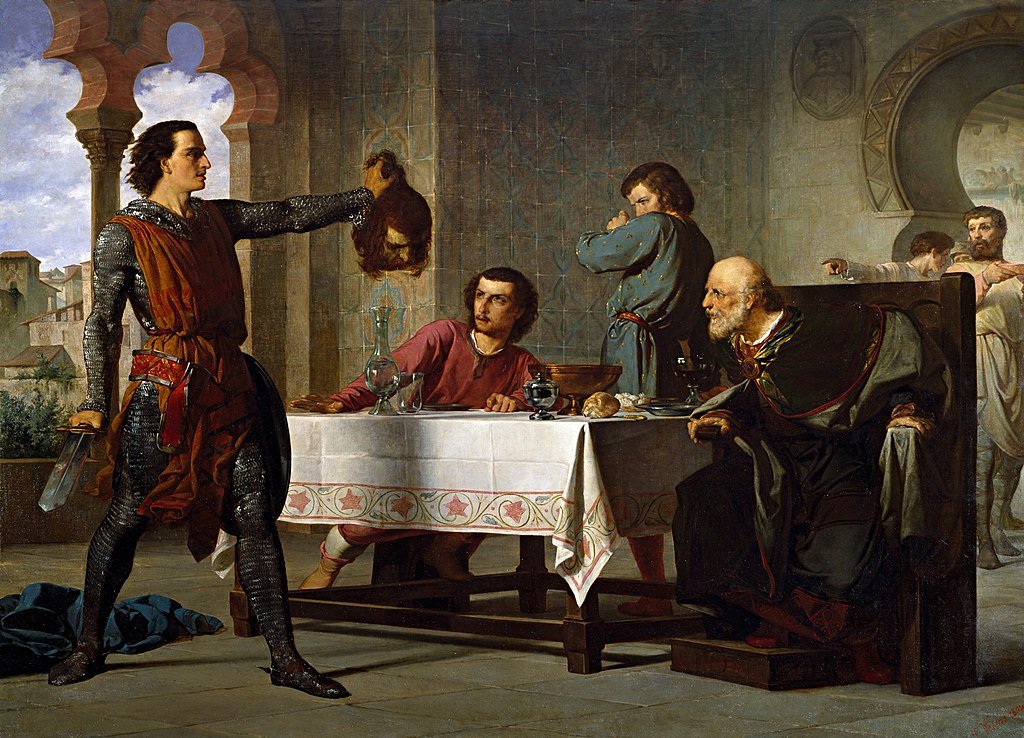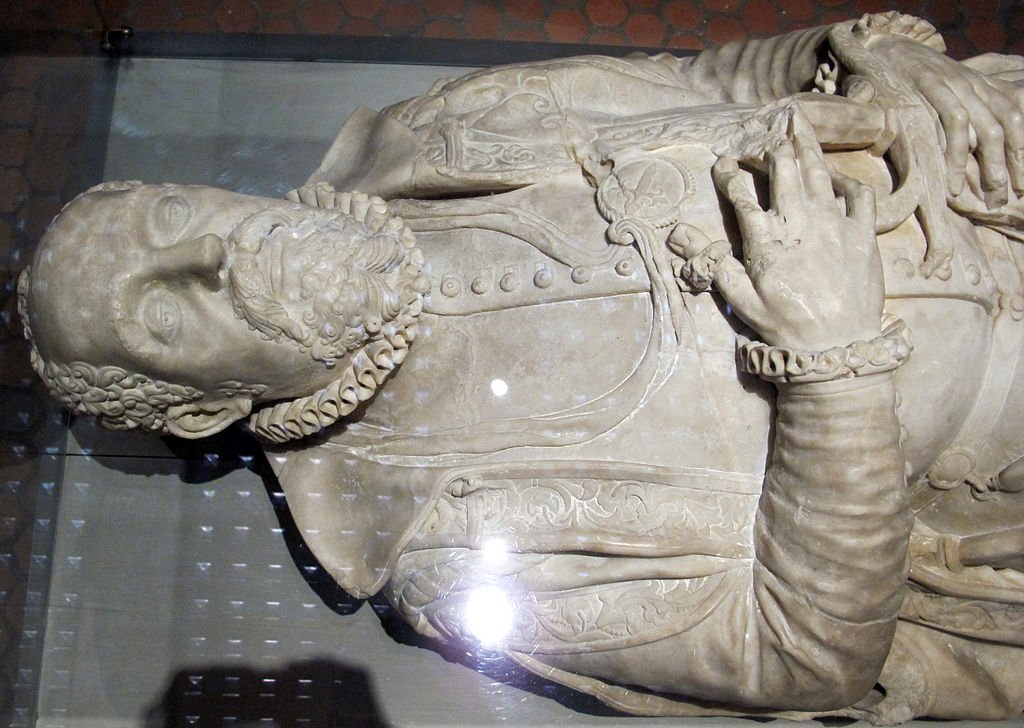The emergence and development of Medieval Spanish chivalry were deeply intertwined with the enduring and intense conflict between Moorish rule in southern Spain and the Christian kingdoms in the north. Spanning from the 7th century to the later part of the medieval era, this conflict witnessed the rise of numerous Spanish knights who gained acclaim and distinction for their courage in battling the Moorish armies.
These valiant knights not only achieved military renown but also amassed political power and influence. Some established independent domains, while others exerted significant control over existing Christian kingdoms. Their valor on the battlefield and strategic prowess allowed them to shape the political and military landscape of medieval Spain, leaving a lasting legacy in the annals of Spanish history.
El Cid

Rodrigo Diaz de Vivar, widely known as El Cid, stands as the most prominent and revered Spanish warrior and medieval knight in history. Hailing from Castile in the 11th century, El Cid’s remarkable journey unfolded through his service in both Christian and Muslim armies, leaving an indelible mark on the annals of Spanish lore.
Initially aligned with Sancho, the ruler of Castile, El Cid waged war against Sancho’s brothers and the Muslim kingdoms in neighboring regions, significantly expanding the Castilian kingdom and earning widespread acclaim. However, tragedy struck when Sancho was slain, and El Cid faced exile under the rule of Sancho’s brother, Alfonso.
Undeterred by adversity, El Cid offered his sword and skills to the Muslim rulers of Zaragoza. During this period, he led numerous military campaigns, solidifying his reputation for valor and military prowess. In the twilight of his life, El Cid achieved a remarkable feat by establishing his independent Christian rule in Valencia, governing with nominal allegiance to Alfonso until his eventual passing.
The legacy of El Cid is immortalized in the medieval Spanish epic poem, El Cantar de mio Cid, a testament to his enduring significance. Even to this day, El Cid remains a cherished national icon in Spain, embodying the ideals of bravery, chivalry, and unwavering loyalty.
Reverter de La Guardia
Reverter de La Guardia, a renowned knight, and viscount of Barcelona during the 12th century, was hailed as one of the era’s most formidable warriors. While the early years of his life did not showcase significant military achievements, an eventful turn of fate occurred when he was captured by the Almoravids around 1126. For a decade, he endured captivity until an unexpected opportunity arose.
The Almoravids, seeking to bolster their forces against the Almohads, offered Reverter a chance to serve in the Muslim army. Accepting the proposition, Reverter joined their ranks and proved himself to be an exceptional warrior in the ensuing clashes between the two Muslim factions. Some historical accounts even suggest that he assumed leadership over the entire Almoravid army during a phase of the conflict. It is speculated that Reverter’s military prowess played a crucial role in sustaining the waning Almoravid dynasty during its final years.
Tragically, Reverter met his end in battle around 1142. His death proved to be a turning point in the war and led to the rapid collapse of the Almoravids, as his presence and strategic contributions proved irreplaceable. The extraordinary life of Reverter de La Guardiatells us of the tendency of medieval knights to cross religious lines for employment during the Reconquista era.
Pedro Fernandez de Castro
Pedro Fernández de Castro is a Spanish Knight, who holds the distinction of being the founder and the first Grand Master of the Order of Santiago. A valiant knight in the army of Alfonso VII of León and Castile, played a pivotal role in various military campaigns during the 12th century.
He contributed to the conquest of Aurelia and Alharilla, present-day Santa Cruz de la Zarza, and later participated in crucial operations in Baeza and Almería. These endeavors significantly weakened the Moorish navy, impacting the broader war effort.
During a crusade in the Holy Land, Pedro envisioned the creation of a new military order dedicated to safeguarding the sepulcher of James the Apostle and protecting the Way of St. James. Together with his wife, sister, and children, Pedro donated a house in Santa Cruz de Valcárcel for the establishment of a monastery aligned with the principles of this order.
Pedro Fernández in Cáceres officially founded the Order of Santiago in 1165, drawing inspiration from the Knights Templar and shaped by the challenges of the Almohad invasion.
Juan de Urbieta
Juan de Urbieta Berástegui y Lezo, a valiant Basque infantryman, who was made a knight when he achieved fame for capturing King Francis I of France during the Battle of Pavia in February 1525.
Amid the fierce battle, the French king found himself embroiled in combat on foot alongside his troops. As he and his entourage attempted to break through the enemy line, tragedy struck when the king’s horse fell, leaving him vulnerable. It was at this pivotal moment that Juan de Urbieta emerged, his weapon trained on the king’s neck.
Joined by Diego Dávila and Alonso Pita da Veiga, Juan de Urbieta accepted the king’s surrender. Unaware of the true identity of their captive, the trio suspected him to be a high-ranking noble due to his opulent attire and armor. Their astonishment knew no bounds when they discovered, upon handing him over to their officers, that they had captured none other than the king of France himself.
In recognition of his momentous feat, Emperor Charles of Spain bestowed upon Juan de Urbieta great honors, including a knightly title and his own coat of arms. This act of valor and capture of a monarch elevated Juan de Urbieta to legendary status, forever enshrining his name in the annals of history.
Suero de Quinones

Suero de Quinones was a remarkable Spanish knight hailing from the kingdom of Leon during the 15th century. His valor and prowess in battle were showcased during the Battle of La Higueruela, a significant conflict in the Spanish Reconquista aimed at capturing Granada.
However, it was a particular event, known as the passage of arms at the Órbigo River in 1434, that brought Quinones unparalleled renown. Renowned for his piety, Quinones took it upon himself to guard the bridge and engage in jousting matches with any knight who sought to pass through.
Given the bridge’s location on a popular pilgrimage route, Quinones and his ten companions faced a continuous stream of challenges. Originally pledging to break 300 lances before departing the bridge, Quinones and his comrades valiantly engaged in 166 jousts. Despite their injuries and exhaustion, they had to relinquish their quest, unable to continue.
The account of this extraordinary feat gained widespread recognition through the Libro del Passo honroso (“Book of the Passage of Honor”), a narrative that documented the events surrounding Quinones and his companions’ remarkable undertaking.
